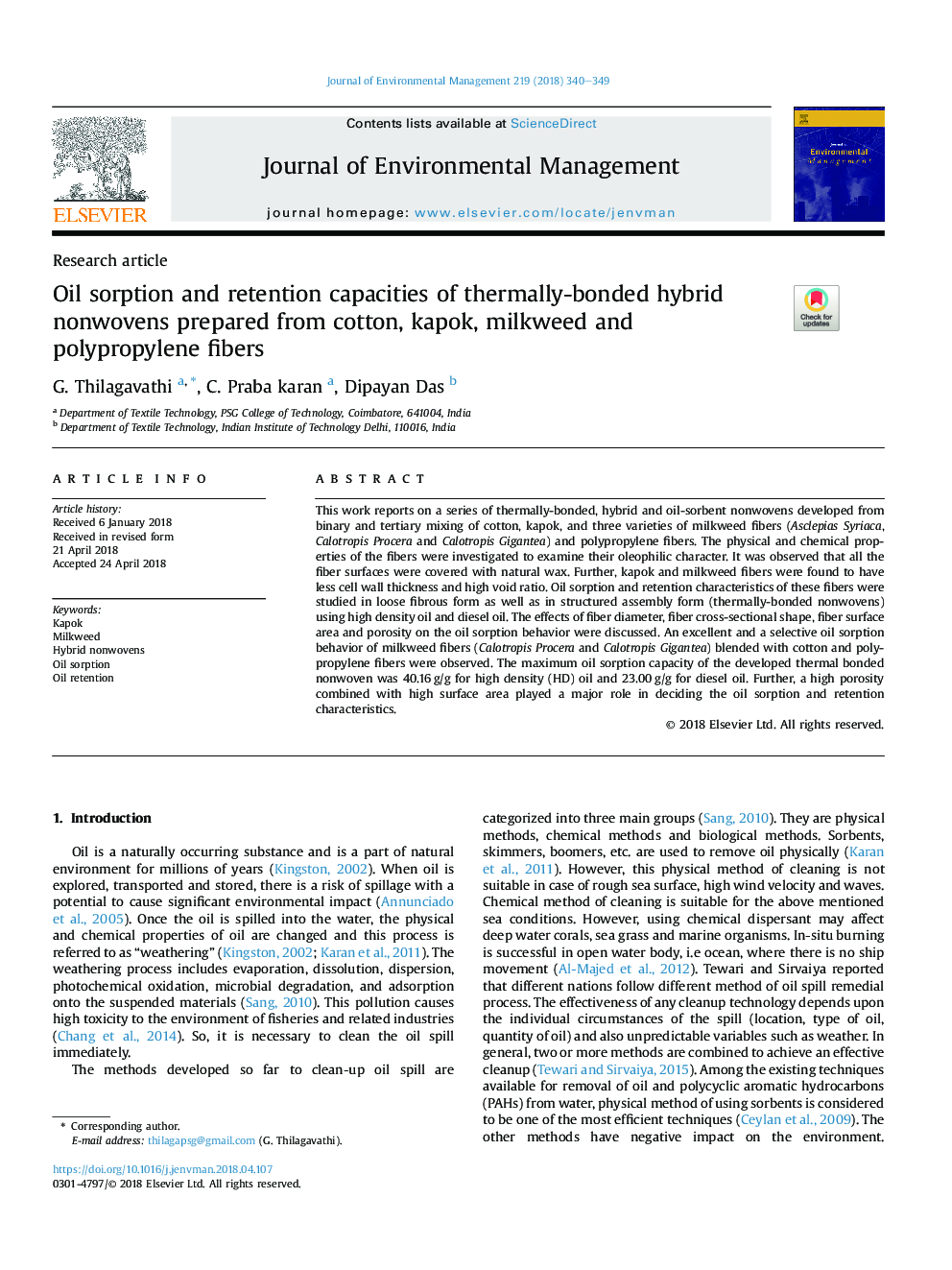| Article ID | Journal | Published Year | Pages | File Type |
|---|---|---|---|---|
| 7476789 | Journal of Environmental Management | 2018 | 10 Pages |
Abstract
This work reports on a series of thermally-bonded, hybrid and oil-sorbent nonwovens developed from binary and tertiary mixing of cotton, kapok, and three varieties of milkweed fibers (Asclepias Syriaca, Calotropis Procera and Calotropis Gigantea) and polypropylene fibers. The physical and chemical properties of the fibers were investigated to examine their oleophilic character. It was observed that all the fiber surfaces were covered with natural wax. Further, kapok and milkweed fibers were found to have less cell wall thickness and high void ratio. Oil sorption and retention characteristics of these fibers were studied in loose fibrous form as well as in structured assembly form (thermally-bonded nonwovens) using high density oil and diesel oil. The effects of fiber diameter, fiber cross-sectional shape, fiber surface area and porosity on the oil sorption behavior were discussed. An excellent and a selective oil sorption behavior of milkweed fibers (Calotropis Procera and Calotropis Gigantea) blended with cotton and polypropylene fibers were observed. The maximum oil sorption capacity of the developed thermal bonded nonwoven was 40.16â¯g/g for high density (HD) oil and 23.00â¯g/g for diesel oil. Further, a high porosity combined with high surface area played a major role in deciding the oil sorption and retention characteristics.
Related Topics
Physical Sciences and Engineering
Energy
Renewable Energy, Sustainability and the Environment
Authors
G. Thilagavathi, C. Praba karan, Dipayan Das,
